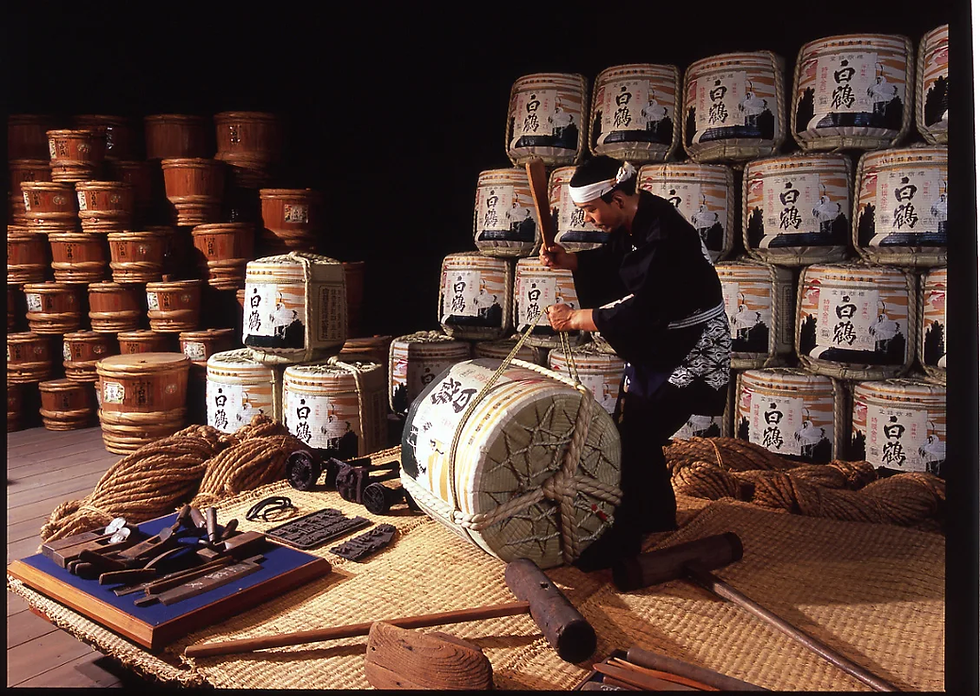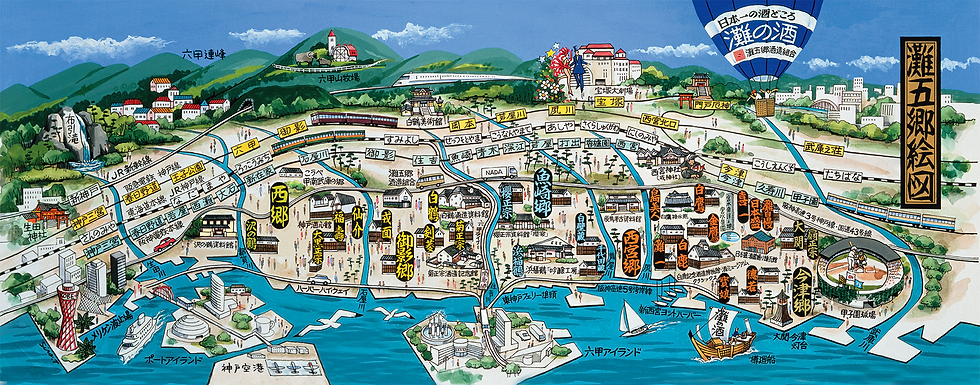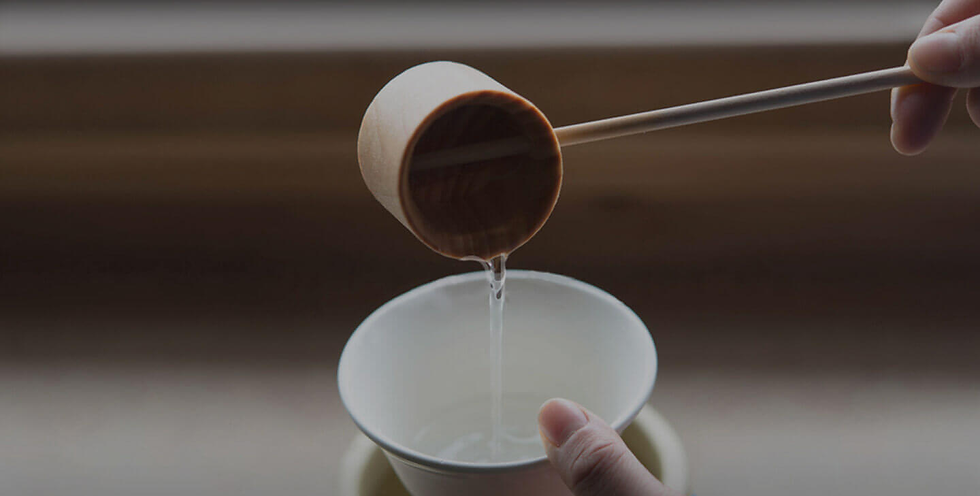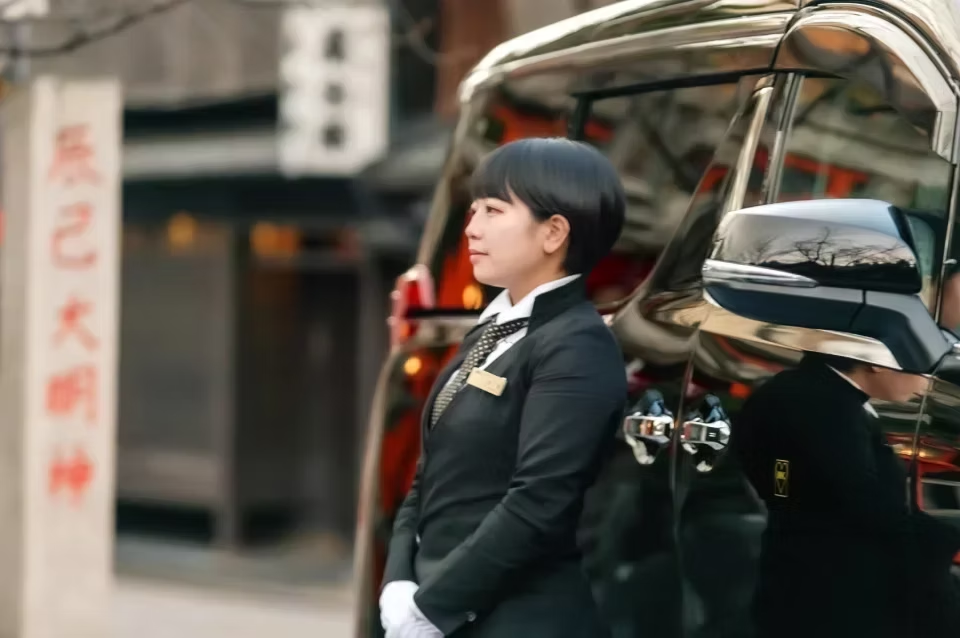Nada Sake District – Fermentation, Tradition, and One Too Many | MK Deep Dive
- M.R. Lucas
- Jul 24
- 3 min read
Updated: Aug 13

The last time I drank sake was at a close friend’s wedding in Kyoto. The wooden cask had just been opened with a mallet—kagami biraki, as they call it—and the clear liquor was ladled into masu cups, then passed around with cheers. I was nearing the end of my first Great Lent—a 40-day fast—and had received a rare blessing from my priest to partake, given the occasion. Of course, I didn't stop there. Seconds turned into fifths. I forgot about the beers I had earlier and the Irish car bombs I was later coaxed into chugging at the afterparty—American guests bringing out old college antics. The next morning, I realized what those paper lunch bags on airplanes are actually for, during the flight back to Tokyo, while my wife sat beside me with a smirk that said it all: “I told you so.”
I share this story not as a recommendation, but as a warning: don’t drink sake like a frat boy. Sip it. Respect it. Because sake is not just Japan’s national alcoholic beverage—it’s a sacred artifact of time, tradition, and regional character. And there's no better place to experience its true essence than in Nada Sake District, just east of Kobe in Hyogo Prefecture.

One of Japan’s leading sake-producing regions, Nada has been at the forefront of fermentation efforts for centuries. Its success stems from a unique combination of natural resources: miyamizu, mineral-rich groundwater from nearby Mt. Rokko; Yamada Nishiki, a premium sake rice grown in the region’s fertile fields; and the rokkō oroshi, the seasonal wind descending from the mountains that cools the steamed rice used in brewing. These elements, along with the region’s closeness to the Seto Inland Sea—ideal for shipping and trade—helped Nada establish itself as a brewing hub during the Edo period.
By the 18th century, Nada supplied over 80% of the sake consumed in Edo, Japan's capital (modern-day Tokyo). Shoguns and commoners alike drank its product. Even today, Nada accounts for more than a quarter of Japan’s total sake production, strengthening its reputation as a cornerstone of the industry.

Nada-ku (灘区), one of Kobe’s nine wards, is also known for being the home of the country’s largest yakuza group—but we’ll keep that topic sealed like a bottle meant to age. What concerns us here is sake, and the ward’s 12-kilometer stretch, running from Kobe’s eastern edge to Nishinomiya, includes five distinct brewing districts: Nishi-go, Mikage-go, Uozaki-go, Nishinomiya-go, and Imazu-go. Together, these areas host around 25 breweries, ranging from well-known names like Hakutsuru and Kikumasamune to smaller, family-run operations with centuries of experience.
Whether you're a seasoned sake enthusiast or a curious first-timer, Nada offers a unique chance to taste, learn, and even observe the brewing process firsthand. Many breweries in this region feature museums, tasting rooms, and factory tours, showcasing both traditional and modern techniques for sake-making. The mix of heritage and hospitality is part of what makes the district a national treasure—despite declining domestic sake consumption, international interest continues to grow.

So come, set the record straight. Rediscover what the Japanese have known for centuries: that sake, when treated with respect, can elevate a meal, create a memory, or mark a moment in time. Just don’t follow in my footsteps and test the limits of what your priest meant by “permission to celebrate.”
Let MK take you there.
Whether you’re exploring centuries of brewing tradition or just tasting your first sip of sake, our private charter service offers smooth travel to Kobe and beyond. Immerse yourself in Japan’s cultural heartlands—without worries about trains, transfers, or schedules. Your journey of discovery begins the moment you step aboard.

Image Credits
Aiko99ann, CC BY-SA 3.0, via Wikimedia Commons
Image from Hanshin Electric Railway – Nada Sake Brewery Tour
Image from Nada Gogo Sake Brewers Association (English Site)




شيخ روحاني
رقم شيخ روحاني
شيخ روحاني لجلب الحبيب
الشيخ الروحاني
الشيخ الروحاني
شيخ روحاني سعودي
رقم شيخ روحاني
شيخ روحاني مضمون
Berlinintim
Berlin Intim
جلب الحبيب
https://www.eljnoub.com/
https://hurenberlin.com/
youtube